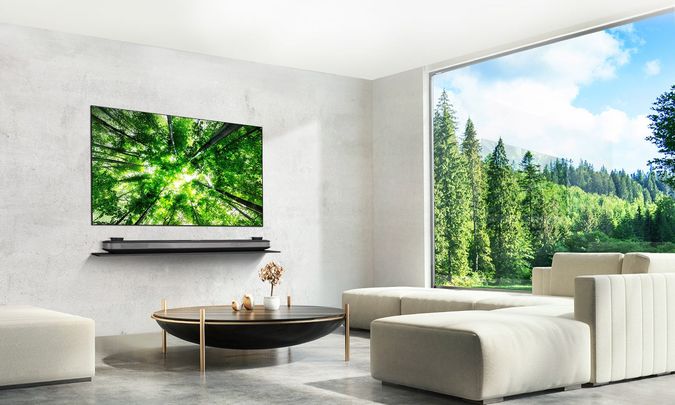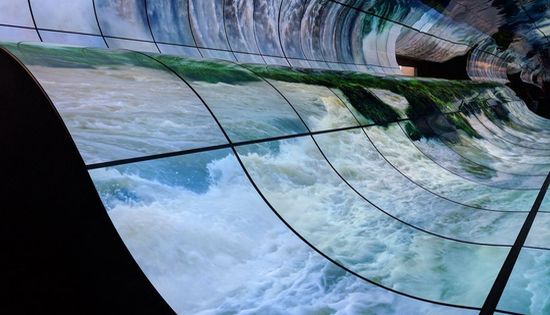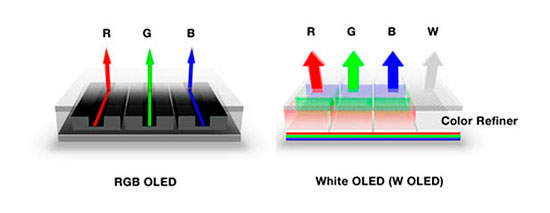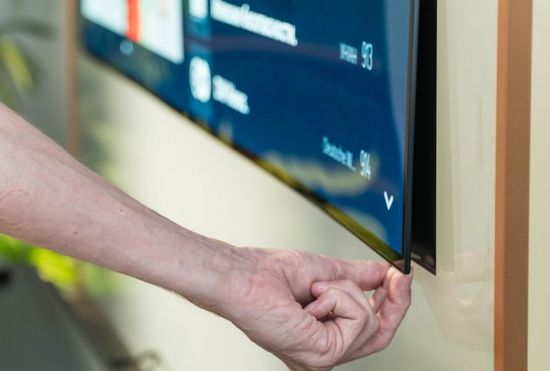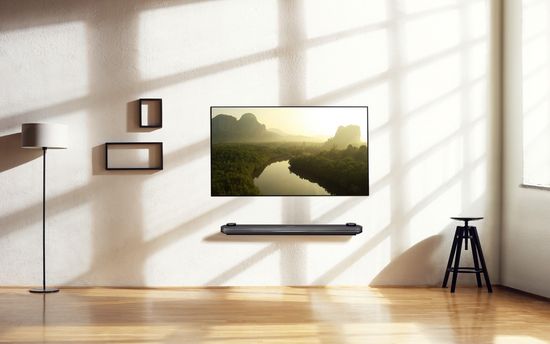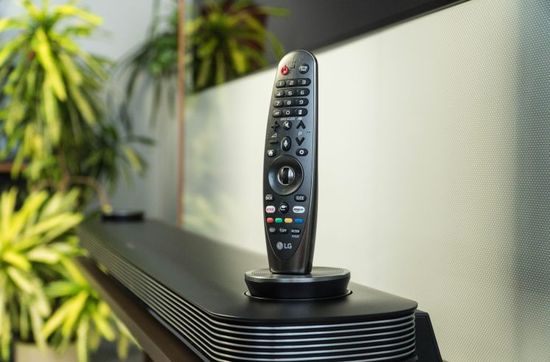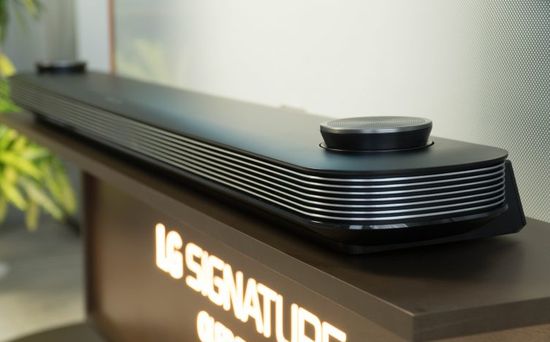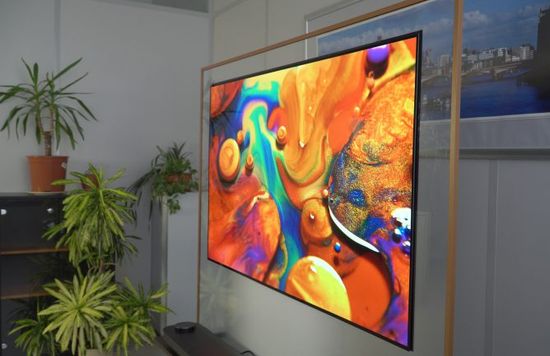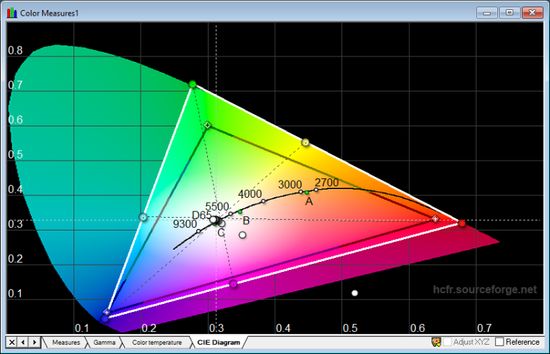Tough competition and the rapid development of digital technologies provoke high dynamics in the consumer electronics segment. Of course, rapid changes are most pronounced in the segment of high-tech TVs. For example, over the past few years, companies have virtually abandoned the 3D function due to limited content and have stopped producing plasma TVs due to the high cost of their production. On the other hand, today many models even of the middle level support SMART TV and this trend continues to evolve. In addition, LG has already demonstrated the Signature Roll Up OLED TV model with flexby screen. At CES 2019, 260 flexible OLED signage screens, connected together to imitate a waterfall struck the imagination of the most imperturbable viewers.
Of course, the invention and development of OLED and QLED technologies fully comply with this trend. As known, OLED (organic light-emitting diode) technology uses radiation of diode under the influence of electricity. Modern models use RGB or WRGB OLED technology with 3 or 4 subpixels, respectively.
LG TVs use WRGB OLED (white + red + green + blue subpixels) technology. According to LG, the fourth subpixel reduces the cost of production while improving brightness, contrast and color rendering. As known, the company manufactures panels on LG Display enterprises, which, of course, further expands the possibilities for optimizing the technology.
In 2018, the company offered several OLED series, including B8, C8, E8, G8 and W8 series.
LG W8 Wallpaper OLED TV with Google Assistant and Amazon Alexa integration is LG’s 2018 flagship. LG SIGNATURE AI OLED TV Picture-on-Wall W8 Series includes 77-inch (76.7-inches diagonal) 77W8 model and 65-inch (64.5-inches diagonal) 65W8 model.
Design
Of course, an unprecedentedly thin screen with an OLED panel thickness of only 2.57 mm is the main key feature of the LG Signature. The G series uses a stand that rotates 90 degrees when mounted on a wall. The more spectacular W series uses a thin cable to connect the screen and the base with the soundbar. Of course, such an engineering solution eliminates the possibility of installing a TV on the table. The OLED panel is attached with magnets to the mounting plate, which, in turn, is attached to the wall.
In addition, an inconspicuous flexible cable can easily be masked with a decorative strip. In this case, the OLED panel is visualized as a large thin picture on the wall.
The TV has two universal tuners and an interface for connecting paid channels. Four HDMI inputs with 4K @ 60 Hz support provide connection for external sources. 2 USB inputs are provided for external drives and peripherals. The home network uses an Ethernet connector for cable and Wi-Fi with 802.11.ac support.
The base with the soundbar is convenient for placing the traditional LG Magic Remote.
Gyro Magic Remote supports control with gestures or arrows around the scroll wheel. In addition, it has a four-way joystick in the center. Moreover, the model supports voice input.
The new Alpha 9 has improved CPU and GPU performance and 35% more RAM.
Other features
Smart TV uses webOS 4.0 with a very convenient and simple menu. Compared to last year, the operating system has an updated LG app store interface and a search button in the upper right corner. In addition, the TV supports ThinQ, which significantly improves the recognition of voice commands.
The model also supports control using a smartphone through the LG TV Plus app. But, of course, the smartphone and TV must be on the same network. Additionally, TV Plus activates the installed apps, turns on the TV by timer and provides content transfer from the smartphone.
Audio 4.2 system includes a 60-watt soundbar with Dolby Atmos support.
Two hidden subwoofers on the edges of the soundbar automatically rise when you turn on the TV. W8 provides surround, rich and deep sound with good detail mid and high frequencies, significantly exceeding its competitors by this criterion. In addition, upward speakers shift the virtual point source to the screen area, enhancing the stereo effect.
Additionally, LG TVs 2018 supports 4K @ 120 fps video mode, but only for video content in streaming services, such as Netflix or on an external devices, via USB. Unfortunately, the lack of HDMI 2.1 limits this feature. Therefore, the model supports only 4K @ 60 fps or 1080p @ 120 fps as a game monitor.
Image quality
LG OLED65W8PLA uses a 10-bit OLED panel with a frequency of 120 Hz, a resolution of 3840 × 2160 pixels and a diagonal of 65 ″ or 77″. It supports all HDR standards, including HDR10, Dolby Vision, Hybrid Log-Gamma (HLG) and Advanced HDR from Technicolor.
The high-performance Alpha 9 significantly improved image processing algorithms. This list includes Quad Step Noise Reduction, Frequency Based Sharpness Enhancer, Object Depth Enhancer, Billion Rich Color and Ultra Luminance Pro technologies. As a result, the TV improved the noise reduction and color accuracy, playback of highly dynamic scenes and the scaling HD content to 4K and expanded the color gamut.
In addition, LG has developed two new HDR processing modes for the popular HDR10 Pro and HLG Pro, using dynamic metadata instead of static. In fact, this TV supports analogue of HDR10 +.
Of course, the image quality makes a huge impression even on the sophisticated viewer because of the absolutely black, which provides tremendous contrast and image depth.
Maximum viewing angles of the OLED-matrix retain excellent playback quality, including brightness, contrast, saturation and color accuracy when viewed from any point.
Additional white pixel of WRGB technology provides maximum brightness. As known, this value OLED-panel depends on the overall image brightness. In other words, the screen brightness decreases with increasing white in the frame. It’s 250 cd / m² for 100% white, 320 cd / m² for 50% white and 500 cd / m² for 10% white. The maximum brightness in HDR mode reaches 750 cd / m².
Picture modes
In addition to the traditional “Bright”, “Standard” or “Sport” modes, the TV has an “Expert” mode, which was developed in conjunction with Technicolor. In fact, it’s similar to the “Cinema” or “Home Theater” modes and offers the optimal settings for watching movies.
Moreover, the model supports two certified ISF (Imaging Science Foundation) modes for a dark room and a room with bright background lighting. The first mode for low light uses a reduced brightness and reduced to sRGB level color gamut, providing a calm image with good detail in the dark and bright areas of the frame. This mode minimizes eye strain when viewed in the dark. The second mode for light room uses a higher brightness to compensate for the light in the room, the standard gamut at 2.2 and the maximum color gamut, providing a brighter and more saturated image.
The HDR effect is most pronounced in the Bright and Standard modes, but for some it will be too exaggerated. “Home cinema”, “Cinema” or “Technicolor Expert” provide a less bright and saturated image, but more accurate color rendering and a soft sharpness effect.
PROS
– great picture;
– innovative Picture-on-Wall design;
– excellent HDR implementation;
– simple and convenient WebOS platform;
– Google Assistant and Amazon Alexa support;
– excellent viewing angles;
– surround, deep sound with superb detailing in all ranges.
CONS
– typical dependence of the maximum brightness of the OLED matrix on white in the frame;
– no HDMI 2.1;
– too high a price.
This video shows the LG OLED65W8PLA.
